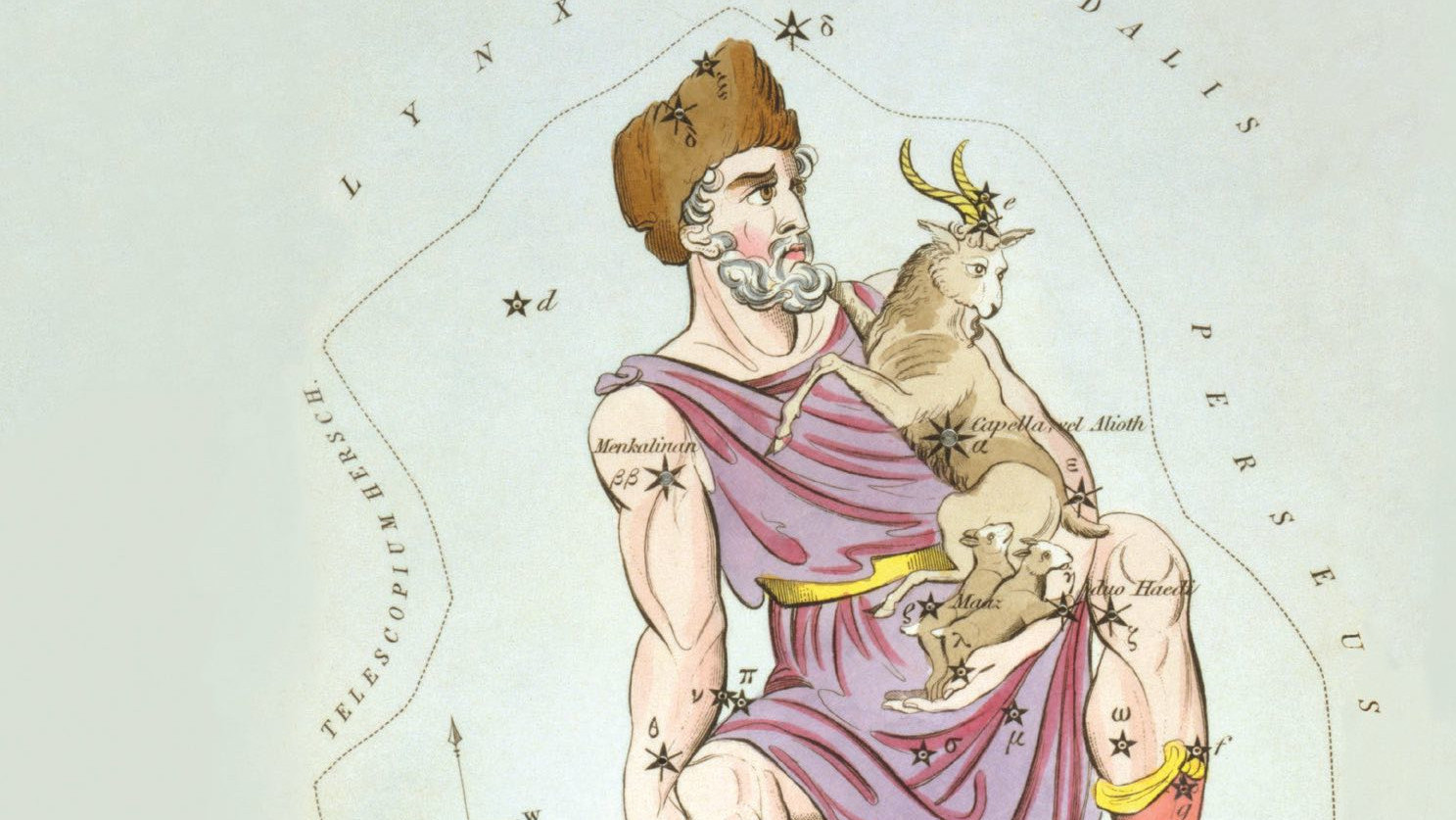Auriga
Auriga is home to Capella, the third-brightest star in the northern celestial hemisphere, and to a beautiful trio of bright star clusters.
 Although the name Auriga suggests a charioteer or a wagoner, visual representations are more likely to be that of a goatherd.
Although the name Auriga suggests a charioteer or a wagoner, visual representations are more likely to be that of a goatherd.This constellation is also known as The Charioteer, and is an easily recognisable constellation in the winter night sky. It lies north of Taurus, between the hero Perseus and Gemini. Auriga’s brightest star, also referred to as α Aur, is known as Capella, which translates as "small female goat" or "kid", the Latin word Capra (goat) being the origin of its name. Capella, according to Greek mythology, depicts Amalthea’s goat, which fed Zeus when he was hiding from his father. She suckled the child Zeus with her milk, and he drank nectar and ambrosia from her horns.
Capella is a double star system, consists of two giant yellow stars, and is the third-brightest star in the Northern Hemisphere thanks to its relative closeness, being 42 light years distant. The main star is circumpolar, meaning it never sets below the horizon at our latitude, even in the summer months it can be easily seen over the northern horizon.
Dancing with the goat
Auriga translates as Charioteer, and it is often known as such in the English language. According to Greek legend, the constellation represents the king Erichthonius. His greatest act was the invention of the quadriga, or four-horsed chariot, which is why he is also regarded in mythology as the inventor of the wheel. The invention was also an end in itself: he was able to move faster with the chariot despite having a serpent's tail in place of his lower body. After his death, the king was transferred to the sky. His final earthly resting place is to be found in the Erechtheion Temple at the Acropolis in Athens.
Despite its name, figurative representations of the constellation usually do not show a charioteer, but instead a goatherd. He holds a goat in his arms, which is marked by the star Capella. ε Aur’s name Almaaz is also derived from the word “goat”.
The Cheshire Cat smiles in binoculars
The star cluster trio M36, M37 and M38 are among the classics in Auriga. Under dark skies, the three are worthwhile targets with binoculars alone. In terms of brightness, however, NGC2281 is just in the lead as the brightest star cluster in the constellation.
Another amusing target for binoculars-owners is a little-known asterism south of M38. Here the grinning cat from Alice in Wonderland smiles at the observer from this pattern of stars. The chain of stars made up of HD 35921 and HD 35327 is the striking smile, above which two stars (HD 35519, HD 35295) form the eyes of the Cheshire Cat.
 Outline map of the constellation of Auriga with our observing recommendations. J. Scholten
Outline map of the constellation of Auriga with our observing recommendations. J. ScholtenAuthor: Nico Schmidt / Licence: Oculum-Verlag GmbH
